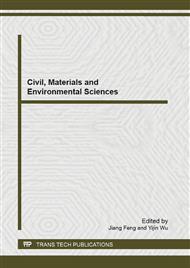p.359
p.363
p.367
p.371
p.379
p.384
p.388
p.392
p.398
Influence of Moisture States of Recycled Coarse Aggregates on the Slump Test
Abstract:
The use of recycled aggregate to produce new concretes has become increasingly widespread, and numerous studies have demonstrated that the final product performs similarly to traditional concrete. However, construction and demolition waste (CDW) presents certain characteristics which could limit its acceptance in the construction sector due to worse performance than natural aggregates. One example of this is water absorption, which in recycled aggregates reaches such high values that the amount of free water calculated for mixing the concrete is affected, consequently impacting on the concrete's properties, especially consistency. This paper reports the possibility of solving this problem with a simple and inexpensive method; pre-saturation of recycled aggregates prior to adding them to the mix. The results of two different pre-treatments are compared; one consisted of immersing the aggregates in water for 10 minutes and the other, in addition to the above procedure, included a brief period of air drying and subsequent elimination of surface water from the aggregate. Both pre-treatments were found to solve the problem of consistency.
Info:
Periodical:
Pages:
379-383
Citation:
Online since:
August 2013
Price:
Сopyright:
© 2013 Trans Tech Publications Ltd. All Rights Reserved
Share:
Citation:


